Вы здесь
Tour to Begazy necropolis in Kyzylarai mountains.
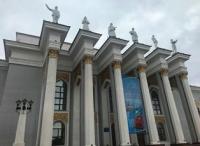
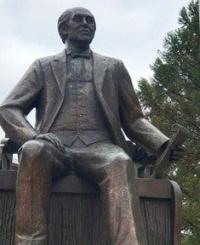
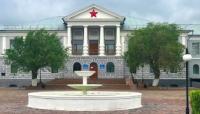

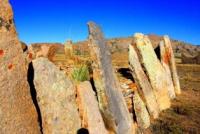
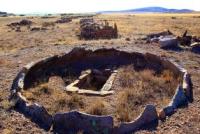
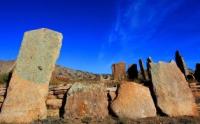
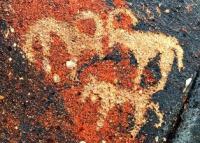
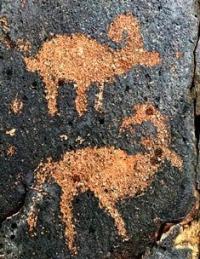
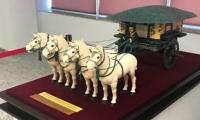
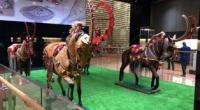
Tours from Karaganda to Astana.
"Moreover, the very act of travel, for a person truly devoted to it, presents the greatest temptation, with its daily change of impressions, the abundance of novelty, and the awareness of its benefit to science. The physical difficulties, once they are past, are easily forgotten and only further enhance the joyful moments of success and happiness in one's memories."
N.M. Przhevalsky
A short description of excursion trip to monuments of Begazy-Dandybaev culture:
Almaty - Karaganda - Aktogay settlements - Shabanbai bi - Begazy necropolis – petroglyphs Zheltau - Karaganda - Astana.
Distance of route: 1052 km.
Season: May - September.
Duration of tour: 8 days, 7 nights.
Best time for tour: July, August.
A detailed program for Begazy necropolis and rock paintings of Zheltau:
A trip from Karaganda to Temirtau town.
Day 1. Almaty - Karaganda.
Breakfast. Transfer to the airport, departure to Karaganda, arrival.
Meeting at the airport, transfer to hotel, accommodation. City tour, a visit to the Karaganda Regional Museum of History and Local Lore. The museum is the largest museum in the area. The museum was opened in November 1932. In 1936, the museum’s funds were replenished with a collection of archaeological finds sent by an expedition of the USSR Academy of Sciences.
Visit to the regional mosque - a cultural and scientific center located in the ethnographic park named after the 10th anniversary of Independence. Visit to the Pitmen’s Palace of Culture located on Bukhar-Zhyrau Avenue. The construction of this magnificen
t palace began in 1940. On the pediment of this building there are six sculptures: a miner, a builder, a shepherd with a lamb, a collective farmer with a sheaf of wheat, Kazakh singer with a dombra and a warrior. Here is a visit to the monument Miner's Glory.
A visit to the Ecological Museum, this is a one-of-a-kind museum; its opening was in 1995. A visit to the cathedral in the name of the Vvedeniya into the Church of the Blessed Virgin Mary, the construction of this temple was started in 1991, ended in 2000. A visit to the Museum of Fine Arts, in the museum you can see the painting of Karaganda, arts and crafts.
Transfer: Karagandy - Aktas village - Dubovka village - Dolinka village (37 km).
Arrival in the village of Dolinka, a visit to the museum in memory of victims of political repression. Return to Karaganda. Transfer to the hotel, dinner, overnight.
Day 2. Karaganda - Dolinka village - Spassky memorial (148).
Breakfast. Transfer: Karaganda - Aktas village - Dubovka village - Dolinka village (37 km).
Arrival in the village of Dolinka, a visit to the museum KARLAG in memory of victims of political repression.
The Dolinka Museum KARLAG is represented by 17 exhibition halls in which:
Entrance group with the composition "Broken Shanyrak".
Hall number 1 "Hunger in Kazakhstan."
Hall number 2 "History of the creation of Karlag."
Hall number 3 "The economic activity of Karlag."
Hall number 4 "Women and children."
Hall number 5 "Research activities of prisoners of Karlag."
“Installation of a pre-trial detention center” and others.
Visit "Mamochkino Cemetery" in the village of Dolinka.
Transfer: Dolinka village - Dubovka village - Kurminskoye village - Zhumabek village - Spassky memorial (77 km).
Arrival at the Spassky Memorial. Walk around the memorial. Spassky Memorial or Spassky Memorial Cemetery of Camp No. 99, is located 34 km in the south of Karaganda in the Abay district of the Karaganda region. It contained political prisoners and internees, and since 1941, prisoners of war.
According to official figures, more than five thousand prisoners are buried here in mass graves. The system of Karaganda camps included many camps and special purpose zones.
Transfer: Spassky Memorial - Karaganda (34 km).
Arrival in Karaganda. Transfer to the hotel, dinner, overnight.
Transfer: Spassky Memorial - Kashkarbai Village - Aksu-Ayuly Village (93 km).
Arrival in the village of Aksu-Ayuly, lunch at a local cafe.
Transfer: Aksu-Ayuly village - Shabanbai bi mausoleum (18 km).
On the way, visit the Shabanbai bi mausoleum, which is located on the right side of the small Sherabaynur river and 1 kilometer west of the highway. Here is the burial place of the famous Kazakh biy - Shabanbai Kalkamanuly.
Further transfer: Shabanbai bi mausoleum - Nura settlement - Zhalanash settlement - Usharal settlement - Aktogay settlement (105 km).
The village of Aktogay is the administrative center of the Aktogay district of the Karaganda region. Visit to the archaeological and ethnographic museum.
The museum has 2435 exhibits, the collection contains exhibits on archeology, ethnography and decorative and applied art. The creation of the museum was facilitated by numerous monuments of archeology and cultural heritage in the territory of the Aktogay region.
Ancient monuments, starting from the Stone Age and the Bronze Age, ending with the epochs of Saks, Huns, Turks, Kipchaks. In front of the museum there are mock-ups of barrows with a "usy" and dummies of the Turkic and Kipchak periods.
Transfer: Aktogay village - Shabanbai bi village (41 km).
Arrival in Shabanbai bi village, accommodation in a guest house, a walk in the vicinity of the village, dinner, overnight.
Day 3. Walking in mountains of Kyzylarai (70 km).
Breakfast. Transfer: Shabanbai bi village - Torkor valley (10 km).
Walk in the environs of the valley. The Kyzylarai mountain range consists of several separate independent mountains. Our walk in the environs of the highest peak of the Kyzylarai mountains in the Myrzakozha mountains. We will visit the small waterfall Myrzakozha, beautiful weathered granite stones, similar to various fantastic sculptures on the background of pine trees in these mountains.
The Myrzakozha mountains extend in the latitudinal direction and are located east of the village of Shabanbai bi. I hope we are lucky, and we will be able to meet deer and very rare argali in Kazakhstan in these mountains.
Further transfer: Torkor valley - Axoran valley (7 km).
Walks in the environs of the valley Aksoran. The Kyzylarai Mountains are mainly composed of sedimentary and igneous rocks, among which granites, porphyrites, quartzites, sandstones and schists predominate. Intermountain valleys and slopes are covered with dense pine forests, and plains of beautiful mountains grow birch groves.
Transfer: valley Aksoran - valley Shaban (21 km).
Walk in the environs of the valley. One of the natural attractions of the Kyzylarai massif is its pine forests that grow on granite rocks, this is the southernmost place of pine distribution in the Central Kazakhstan ecological system, bordered by desert expanses. In the Kyzylarai mountains is located the Auliye valley, which fascinates with its magnificent views and colorful landscapes.
Transfer: Shaban valley - Shabanbai bi village (32 km).
Arrival in Shabanbai bi village, accommodation in a guest house, dinner, overnight.
Day 4. Walking in mountains of Kyzylarai (18 km).
Breakfast. Transfer: Shabanbai bi village - Arai valley (3 km).
A walk in the environs of the valley Arai.
Transfer: valley Arai - Aulie mountains (8 km).
A walk in the beautiful mountains, here are the peaks of Shadyrbai and Auliye peak 1274 meters high above sea level. Climbing in the Aulie mountains, visiting a small lake in the rocks among the granites. From the top of the ridge to the south, a panorama of the entire Kyzylarai mountain range opens.
Descent from the ridge and visit the Aulie cave.
Transfer: Auliye mountains - Shabanbai bi village (7 km).
Arrival in the village, rest, dinner, overnight.
Day 5. Village Shabanbai bi - Begazy necropolis - Zheltau petroglyphs - Karaganda (379 km).
Breakfast. Transfer: Shabanbai bi - balbal village in the Karashoky valley (12 km).
Our journey begins from the village of Shabanbai bi along a country road on the right bank of the Karatal River. We bypass the Ayulyozek mountains, which will be located to the west of our path. In the valley Karashoky there is a unique example of an ancient sculpture - an ancient stone statue - a sculpture of “balbal” (local name), an examination of the “balbal”.
Transfer: Karashoky valley - Begazy necropolis (7 km).
Arrival at the Begazy necropolis. Inspection and walks in the vicinity of the ancient burial. The total area occupied by the Begazy necropolis is about 10 hectares. The largest and earliest mausoleums are located in the northern part of the complex, at the very foot of Mount Begazy, very close to the Andronov group, on its north-eastern side.
The Begazy rock tombs have a common structural similarity - the entrance corridor, the upper gallery, the support pillars that secure the joints of the facing slabs - they differ from each other in size, the special arrangement of the walls, and sometimes have two division chambers.
All mausoleums are built in a square plan, often with a double wall and oriented to the cardinal. The entrance is always facing east. Short excursion to Begazy mountains.
Transfer: Begazy necropolis - Zhetymshoky village - Sary-Terek village - small village Aktumsyk - Zheltau petroglyphs (53 km).
We pass the necropolis and the Begazy mountains, soon in the southeast we will see the massif of the Ayyrtas mountains with a dominant peak 872 meters above sea level. We pass the village of Zhetymshoky and head along the asphalt road to the southeast to the small village of Aktumsyk. After the village of Aktumsyk, we pass of the Tokrau river and along the beautiful country road we move east to the mountains of Kishi-Zheltau.
Arrival at the Zheltau petroglyphs, inspection of drawings, walks in the vicinity. Zheltau Petroglyphs are the oldest. Fifteen argali are depicted on stone slabs around a symbolic image reminiscent of acacia, similar to that currently growing near the rocks in this gorge.
Anthropomorphic characters are represented by horseback riders, on a two-humped camel. The scene of hunting mountain rams, roe deers and deer stands out in which the main character - the horse archer - is depicted very realistically: a man is shown waist-high and turned back, armed with a large complex bow with an arrow.
Another multi-figure composition demonstrates a person who connects with horses located on this plane vertically, unlike other animals drawn in a horizontal plane. Of interest are schematic anthropomorphic images that can be considered as “sun-headed” characters: over the head of a person drawn in a face, several large dots show the “halo”.
Transfer: cave paintings Zheltau - Aktumsyk village - Aktogay village - Aksu-Ayuly - Karaganda village (307 km).
Arrival in Karaganda, transfer to hotel, overnight.
Day 6. Karaganda - Astana (214 km).
Breakfast. Transfer: Karaganda - Temirtau (31 km).
A sightseeing tour of Temirtau, a panorama with pipes of factories of the Temirtau Metallurgical Plant, a tour of the old building of the House of Culture of Metallurgists on Republic Avenue, the main attraction of the city is the monument to the Metallurgists.
The monument to Metallurgists is made of stainless steel and bronze, opened in 2001.
Transfer: Temirtau – village Osakarovka - Astana (183 km).
Arrival in Astana. Transfer to the National Museum of the History of Kazakhstan. Excursion to the National Museum of the History of Kazakhstan. Visiting the archaeological, ethnographic, historical and cultural halls of the National Museum of Kazakhstan, visiting the exposition in the halls of ancient and medieval history, modern history.
Visiting the halls of gold, ethnography, Independent Kazakhstan, Astana, modern art. Transfer to the hotel, accommodation, overnight.
Day 7. Astana.
Breakfast. Excursion in Astana. Visit to the Hazret Sultan Mosque. The mosque is located on the right bank of the Ishim River, near the American Embassy, next to the Kazak Eli monument and is located next to the Palace of Peace and Reconciliation.
The main mosque of Astana is built of white marble. The second largest mosque in Central Asia after the mosque in Turkmenistan "Spirituality of Turkmenbashi". The construction of the Hazret Sultan Cathedral Mosque began in June 2009. The building was built in the classical Islamic style with the use of traditional Kazakh ornaments. 5000 believers can fit in the Hazret Sultan Mosque, up to 10,000 people on holidays.
The Hazret Sultan Mosque has the largest dome in Kazakhstan, 51 meters high and 28.1 meters in diameter at the base of the dome. The mosque also has eight small domes with diameters of 10.45 and 7.6 meters, and a height of 33, 46 and 25 meters. In the corners of the mosque there are 4 minarets 77 meters high.
After the excursion to the mosque, transfer to the shopping and entertainment complex - "Khan Shatyr". From here our tour on the Nurly Zhol boulevard will begin. Behind us is the Khan-Shatyr complex, designed by the British architect Norman Foster.
Further we go through the Gashyktar park, through the arch of a popular administrative building with gilded glass to the Nurly Zhol boulevard. On our way, we examine: the Water-Green Boulevard residential complex, the buildings of OA “Kazakhstan Temir-Zholy” (nickname Lighter), the Emerald Quarter business center, the Northern Lights residential complex, the Astana-Baiterek monument "(Visiting the Bayterek tower).
The height of Astana-Baiterek is 105 meters, the diameter of the ball is 22 meters. Inside the ball are a bar and a panoramic room. Further, our walk continues to the House of Ministries, the building of the Government of Kazakhstan, the Supreme Court of the Republic of Kazakhstan.
The boulevard of Nurly Zhol ends with the residence of the president of Ak Orda.
Day 8. Astana.
End tour.
Note:
Author program of Alexander Petrov. Copying and introduction from tanction of author.
Photos by:
Alexander Petrov







